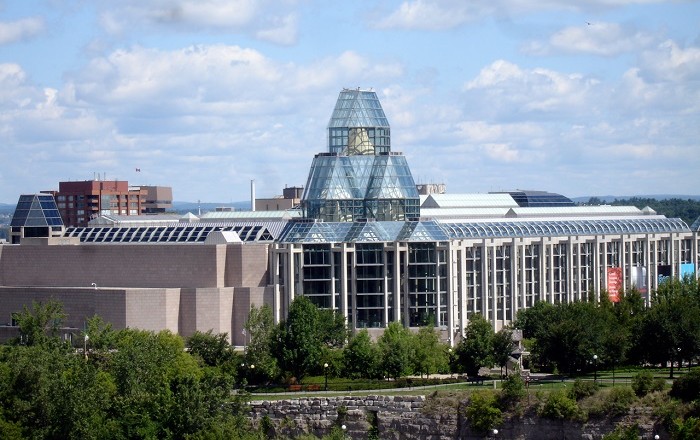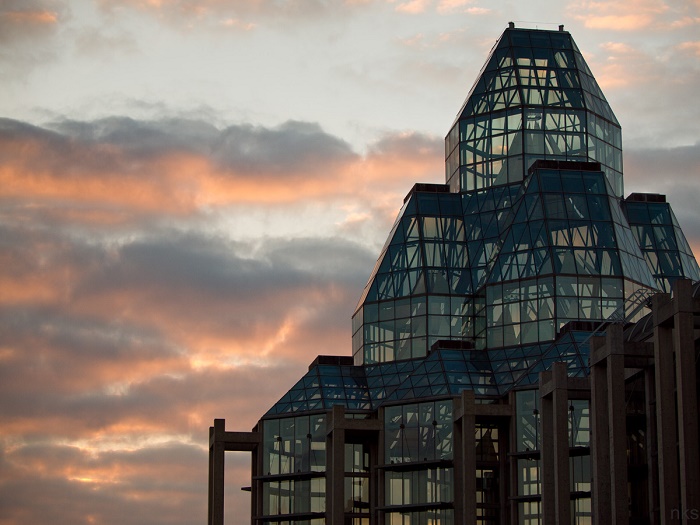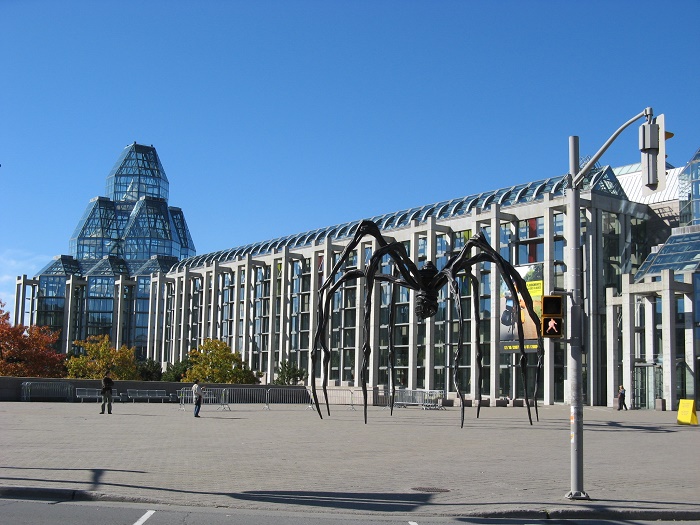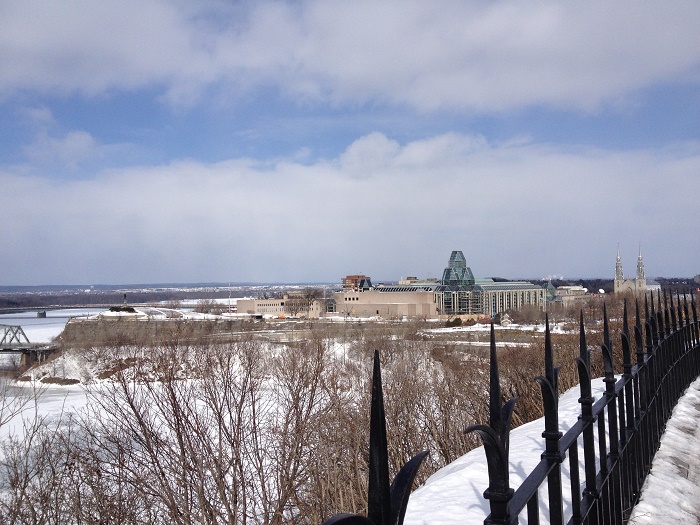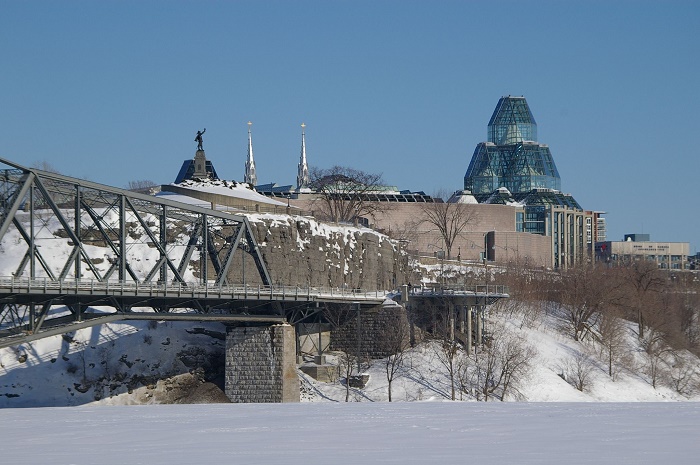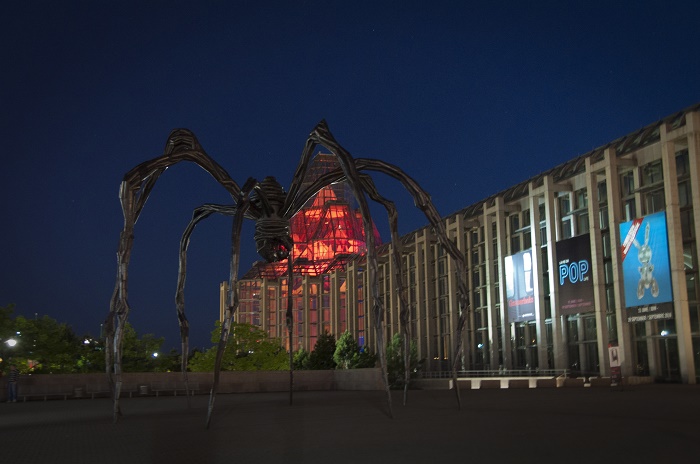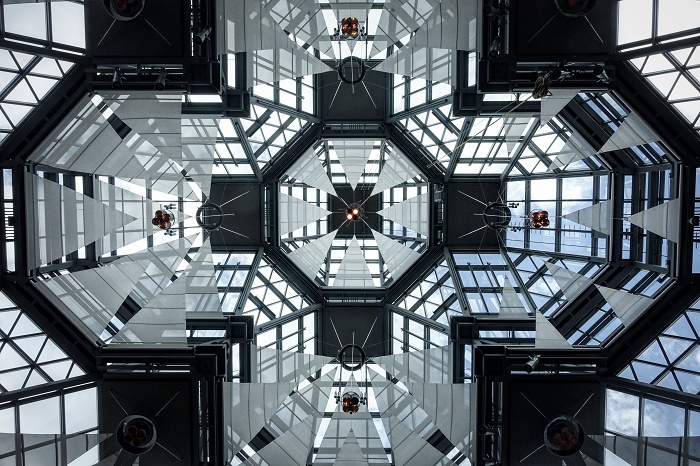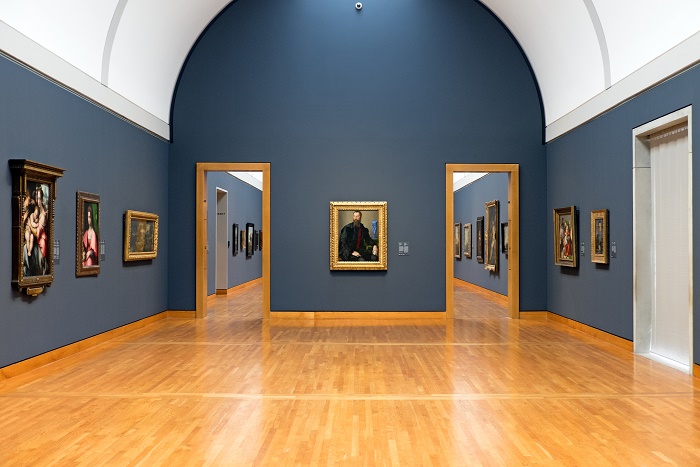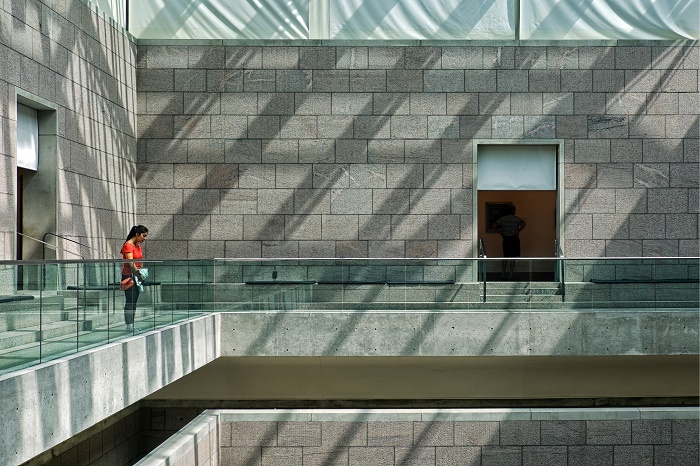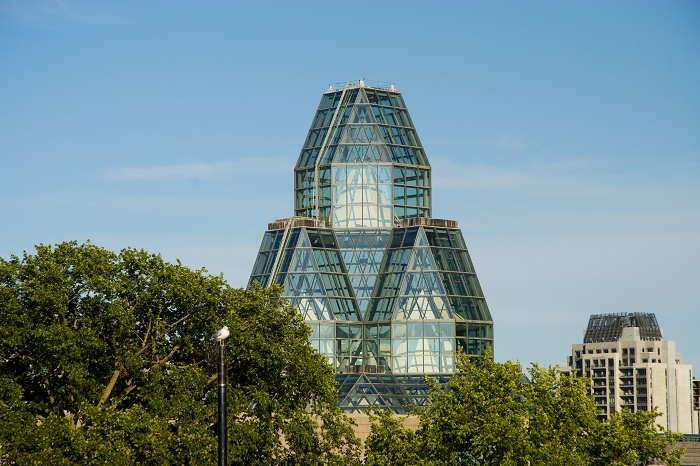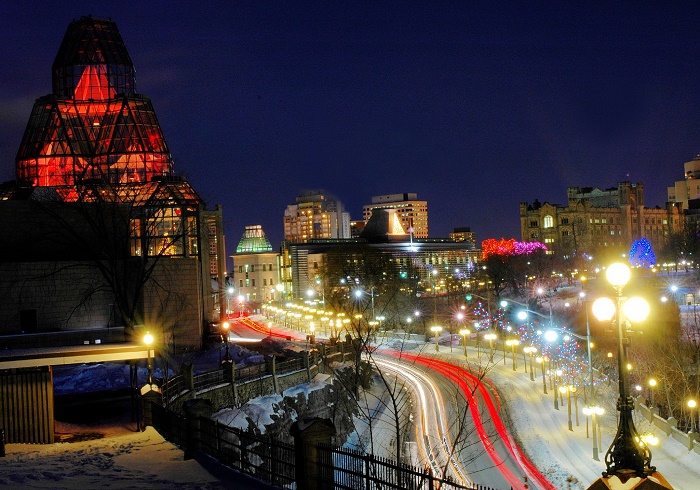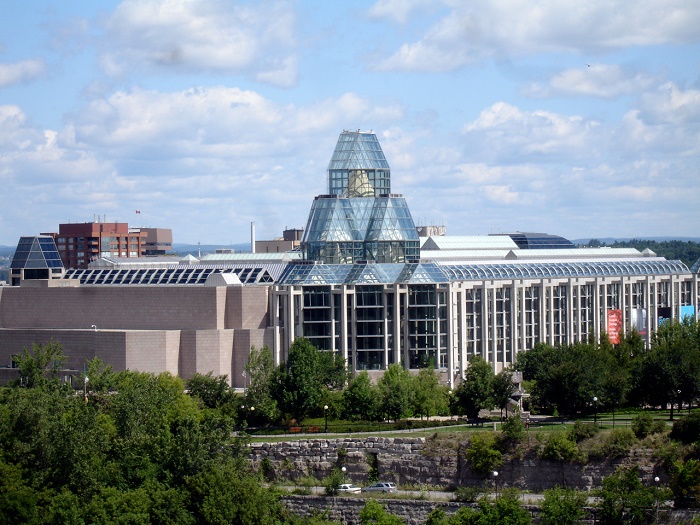The National Gallery of Canada, also known as Musée des beaux-arts du Canada, is one of the most recognizable and unique buildings, located in the city of Ottawa, the capital city of Canada.
Designed to display the art treasures of a nation, the gallery marks the pinnacle of Canadian and international artistic achievement, and today it is one of the grandiose examples for how the art galleries should be organized. The architect responsible for the design of the structure is Moshe Safdie, who designed this 122 million Canadian dollars piece of art.
The groundbreaking began in December 1983, and it was completed and inaugurated in 1988. With astonishing 53,265 square meters (569,000 square feet), the gallery has a height of about 43 meters (140 feet), which makes the Great Hall. As a matter in fact, the soaring windows of the Great Hall capture the Parliament Buildings, the Ottawa River and the Gatineau Hills in vertical frames, making it dramatic by day and stunning by night.
The structure was built of granite and glass, housing Canada’s exceptional art collection, and welcoming every visitor who would like to witness not just some of Canada’s greatest art works, but also from around the world too.
The most striking part of the building is the Colonnade which is constructed of granite and glass, and connects the main entrance of the building to the Great Hall, together with the glass pavilions that make the museum appear open and inviting.
The galleries, where the art works are housed, are divided into six separate areas, such as: the Canadian collection, the European, American, and Asian galleries, the Inuit galleries, a section for contemporary art, which includes video, another for prints, drawings, and photographs, and a separate space for temporary exhibitions.
As the Gallery’s former director Jean Sutherland Boggs was chosen especially by Prime Minister Pierre Trudeau to oversee construction of the national gallery and museums, it is certain that a perfect job was done.
The expansive windows, which offer a stunning panoramic view of Parliament Hill, Nepean Point and beyond, combined with warm furnishings, create an inviting environment for readers and researchers alike at the Gallery’s Library and Archives, that has approximately 250,000 documents, books, catalogues etc.
There are even courtyards which are covered with glass, and serve as a welcome retreats, calming and restful places to pause a bit from all of the art. The Garden Court is planted with trees and seasonal flowers, while the Water Court has a shallow pool of rippling water which also acts as watery skylight for the lobby below.
The indoor and outdoor gardens are created in cooperation with the landscape architect Cornelia Hahn Oberlander, where her inspiration for the taiga garden on the southeast side, with its severe northern beauty and muted colors, came from A.Y. Jackson’s painting Terre Sauvage.
The only part of the National Gallery of Canada that is generally not accessible to the public is the Curatorial Wing, which provides office space for the staff of the Gallery, and also contains conservation laboratories, workshops, extensive vaults and a study room for prints, drawings and photographs.
There is also the well known and most famous works of art, named Maman which is 9 meters (30 feet) tall bronze sculpture of a spider carrying a sack of 26 pure white marble eggs under her belly, sculpted by Louise Bourgeois. With special exhibitions that are presented all year round, there are the displays of contemporary art that change every three to six months to offer rich and varied encounters with art created over the past three decades in Canada and abroad, making it the perfect spot for the enthusiasts for contemporary art.

